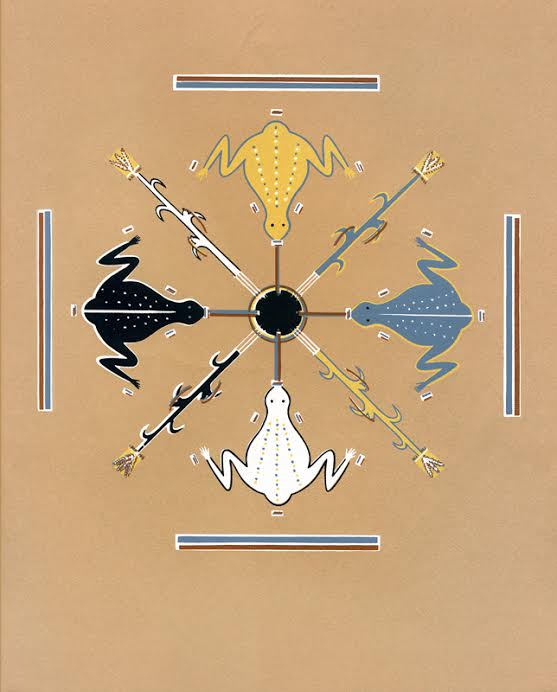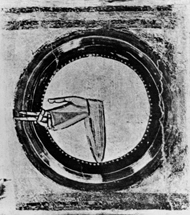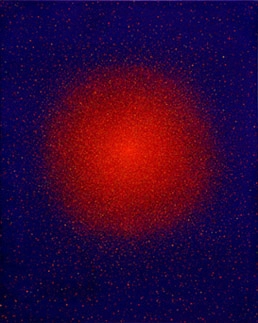ARAS Connections: Image and Archetype - 2008 Issue 3

In reviewing the articles for this edition of the ARAS Online newsletter, I am struck by the power of the image and the symbol to draw people from different walks of life and at different stages of life into a numinous orbit of common interest. Harry Prochaska, from whose book Amplification of Symbols, we have drawn the chapter "The Circle, the Wheel and the Sundoor", came to ARAS relatively late in his life. Before his involvement in ARAS, Harry was a professor of English and it was only after his retirement that he devoted full time to the study of symbolic images in his role as ARAS Curator of the C.G. Jung Institute of San Francisco. He brought depth of scholarship and rich life experience to his love of ARAS. On the other hand, Karen Arm has just about grown up in ARAS. She came to ARAS as a relatively young student of 27 and has been working with symbolic imagery ever since that time--as a researcher, as an assistant curator, and as an artist. Allison Langerak's lovely interview of Karen captures something of the diversity of interests and talents that one person can bring to ARAS. And, ARAS, at its best, is all about a unique kind of diversity that can combine an interest and aptitude in art, history, science, religion, culture, symbol, research, scholarship, and even among some, the ability to create images as well as resonate to their depth and meaning.
Tom Singer, M.D.
Co-Chair of the ARAS Online Committee
The Circle and the Wheel and the Sundoor

The Circle
Images are dynamic. They appear and disappear at a given moment in dreams, active imagination or meditation; they change and evolve. Sometimes it is important to fix a numinous moment by painting or writing, to give it form in a concrete expression. But it is important, at the same time, to allow and encourage the dynamic process. Indeed, the "unconscious" often does this for us when an image becomes recurrent in a series of dreams as its evolution grows out of an internal reorganization of personal material. In this elaboration of detail, we can find those multiplicities of meanings at work and those interactive associations which make a symbol more than a "sign." They become a vital part of one's inner life as their development tells us more and more about ourselves and about the world we live in. The circle is one of those symbols which dates back to the pre-history of human culture. As a geometric form it occurs in the earliest paintings on cave walls.
The center of the circle is the point from which all that it contains radiate outward, or it is the centrifugal center towards which all of its contents are drawn. Symbolically these carry different meanings. The circumference defines the outer extremities of the circle. It delimits its outward radiating movement and establishes any given circle as a container. It is empty; it is undifferentiated, it is no-thing. (It is important to hyphenate the word). It is a symbol of wholeness because the unmanifested possibilities make it at once an image of fullness, and, at the same time, it is empty of specific "things."
As I was looking in ARAS for a specific image of the circle as the unmanifested, I "accidentally" stumbled on a photograph of the theatre at Epidaurus. It shows the curve of the seating on the hillside and the open circle of the orchestra in the foreground. Nothing, it seemed to me, could illustrate more clearly the circle as potential than the empty orchestra of a Greek theatre, the place where things could happen, where they will happen, but have not yet occurred. I remember sitting in the Greek theatre at Taraomina, looking across the empty orchestra and the scena to the broad sweep of the sea beyond the blue afternoon sky above; I felt something of the evanescence of human events in that cosmic setting. They appear, run their course, and then fade, leaving the hillside, the sea and the sky as silent witnesses of those passing events. Manifestation takes place out of emptiness and completes its full cycle. The round orchestra of the theater symbolizes the dynamic progression from nothing to nothing.
Click here to see images and the rest of this article
Interview with Karen Arm

The ARAS archive in New York is an active place. It has to be in order to make our ambitious and important projects happen. One of the people who has been instrumental in these projects is the Assistant Curator, Karen Arm. Not only has she contributed her curatorial and computer skills to ARAS but she is also a talented and accomplished artist. This side of her career gives her a unique perspective in her work with ARAS images. I sat down with her to find out more about how these two sides of her life mesh.
Allison: Karen, how long have you worked at ARAS?
Karen: I started working in 1989; just one day a week. I was still finishing graduate school at Columbia University. So, it's been 19 years.
Allison: What was it like when you first started?
Karen: It was just Ami Ronnberg, the curator and myself and we were finishing up Volume 1 of the Encyclopedia of Archetypal Symbolism and my first job was to track down permissions for some of the images in this book. That was before the Internet so it was more about calling up places like the Indian Embassy and lots of other unusual places trying to find these images. It was very different in those days. You really had to use the library a lot. I got really into doing the detective work to try and track these images down. I learned about all aspects of the archive and helped users when they came in. A few years later we began work on Volume 2 of the Encyclopedia which we worked on with George Elder, the writer. Ami, George and myself worked on this book together for several years and this is one of my most treasured experiences at ARAS. We had such a great time together.
Click here to see the rest of this article
Become a Member of ARAS!
Become a member of ARAS Online and you'll receive free, unlimited use of the entire archive of 17,000 images and 20,000 pages of commentary any time you wish—at home, in your office, or wherever you take your computer.
The entire contents of three magnificent ARAS books: An Encyclopedia of Archetypal Symbolism, The Body and The Book of Symbols are included in the archive. These books cost $330 when purchased on their own.
You can join ARAS Online instantly and search the archive immediately. If you have questions, please call (212) 697-3480 or email info@aras.org
We Value Your Ideas
As our newsletter grows to cover both the ARAS archive and the broad world of art and psyche, we're eager to have your suggestions and thoughts on how to improve it. Please send your comments to info@aras.org. We look forward to your input and will reply to every message.
Subscribe
If you're not already a subscriber and would like to receive subsequent issues of this newsletter by email at no cost, e-mail us at newsletter@aras.org.
